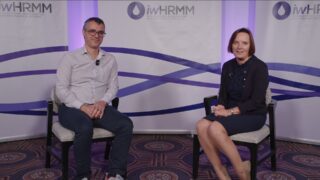So, EMD is one of the fields that we really understand much better than what we know today. It is mainly because with the developments in immunotherapies, EMD is one space where we keep seeing patients are relapsing with very little disease or no disease in their bone marrow, but the disease relapses from these extramedullary sites. There have been presentations and papers recently at ASH and then in some journals that we have seen showing EMD biology compared to newly diagnosed disease biology, and what has consistently been shown by those presenters was that the EMD sites often show features that are more similar to high-risk disease that we have in bone marrow...
So, EMD is one of the fields that we really understand much better than what we know today. It is mainly because with the developments in immunotherapies, EMD is one space where we keep seeing patients are relapsing with very little disease or no disease in their bone marrow, but the disease relapses from these extramedullary sites. There have been presentations and papers recently at ASH and then in some journals that we have seen showing EMD biology compared to newly diagnosed disease biology, and what has consistently been shown by those presenters was that the EMD sites often show features that are more similar to high-risk disease that we have in bone marrow. There are still unanswered questions, though, like whether or not the EMD microenvironment is very similar to the bone marrow microenvironment. There are people and research groups still focusing on these questions, comparing EMD sites with the marrow to understand if they have a similar microenvironment. There are still questions whether or not the EMD is a reflection of high-risk disease or if it’s still a very diverse disease site similar to bone marrows. I think compared to a few years ago, we have made some progress, but we are still lacking a lot of information in this space. It is because most of the researchers we have today are focusing directly on the bone marrow, where it is the origin of this disease. But as we make progress, as we are adding more single-cell technologies, adding more bulk sequencing to what is available, I think we are going to learn more. There are still a lot of questions that have not been answered specific to EMD today.
This transcript is AI-generated. While we strive for accuracy, please verify this copy with the video.














